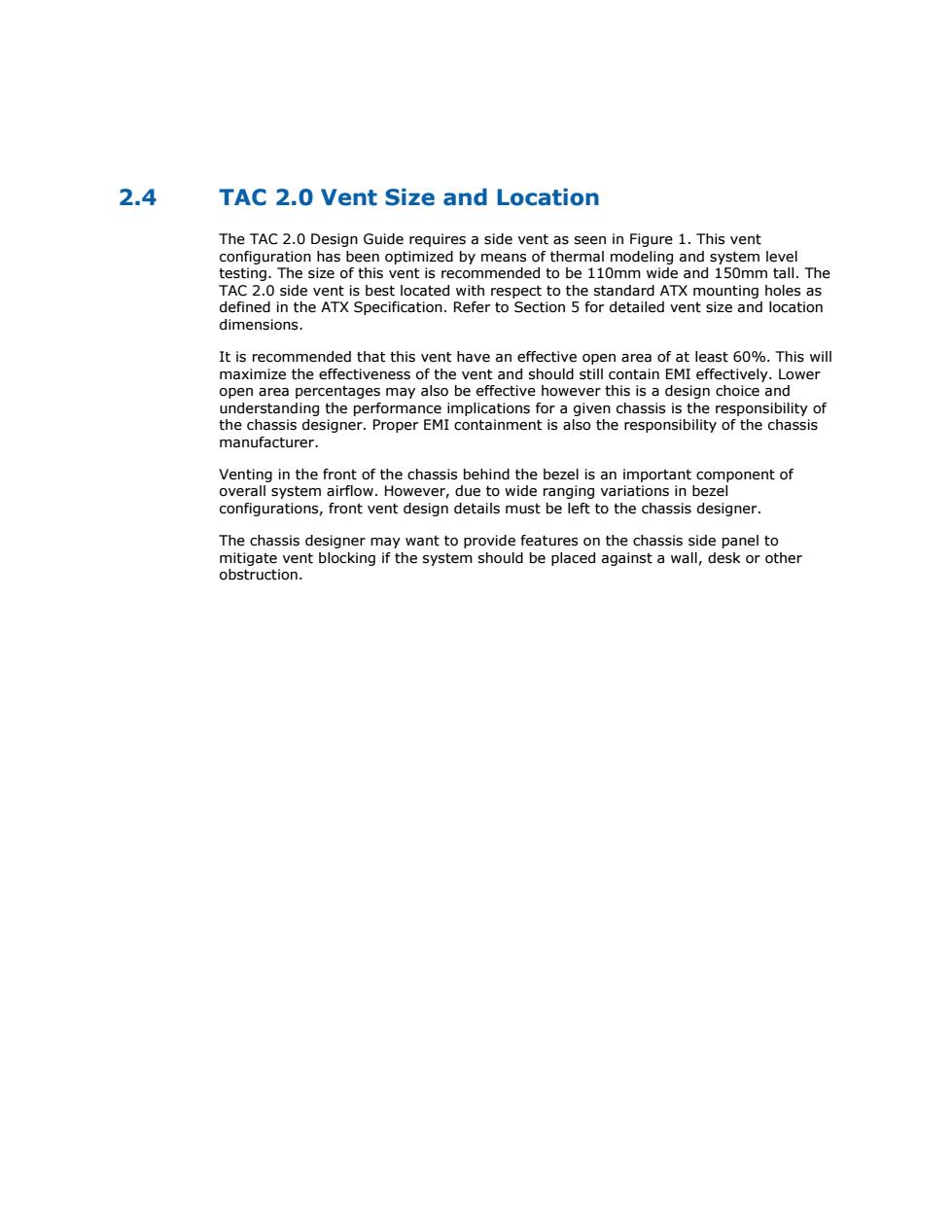正在加载图片...

2.4 TAC 2.0 Vent Size and Location The TAC 2.0 Design Guide requires a side vent as seen in Figure 1.This vent configuration has been optimized by means of thermal modeling and system level testing.The size of this vent is recommended to be 110mm wide and 150mm tall.The TAC 2.0 side vent is best located with respect to the standard ATX mounting holes as defined in the ATX Specification.Refer to Section 5 for detailed vent size and location dimensions. It is recommended that this vent have an effective open area of at least 60%.This will maximize the effectiveness of the vent and should still contain EMI effectively.Lower open area percentages may also be effective however this is a design choice and understanding the performance implications for a given chassis is the responsibility of the chassis designer.Proper EMI containment is also the responsibility of the chassis manufacturer. Venting in the front of the chassis behind the bezel is an important component of overall system airflow.However,due to wide ranging variations in bezel configurations,front vent design details must be left to the chassis designer. The chassis designer may want to provide features on the chassis side panel to mitigate vent blocking if the system should be placed against a wall,desk or other obstruction.2.4 TAC 2.0 Vent Size and Location The TAC 2.0 Design Guide requires a side vent as seen in Figure 1. This vent configuration has been optimized by means of thermal modeling and system level testing. The size of this vent is recommended to be 110mm wide and 150mm tall. The TAC 2.0 side vent is best located with respect to the standard ATX mounting holes as defined in the ATX Specification. Refer to Section 5 for detailed vent size and location dimensions. It is recommended that this vent have an effective open area of at least 60%. This will maximize the effectiveness of the vent and should still contain EMI effectively. Lower open area percentages may also be effective however this is a design choice and understanding the performance implications for a given chassis is the responsibility of the chassis designer. Proper EMI containment is also the responsibility of the chassis manufacturer. Venting in the front of the chassis behind the bezel is an important component of overall system airflow. However, due to wide ranging variations in bezel configurations, front vent design details must be left to the chassis designer. The chassis designer may want to provide features on the chassis side panel to mitigate vent blocking if the system should be placed against a wall, desk or other obstruction